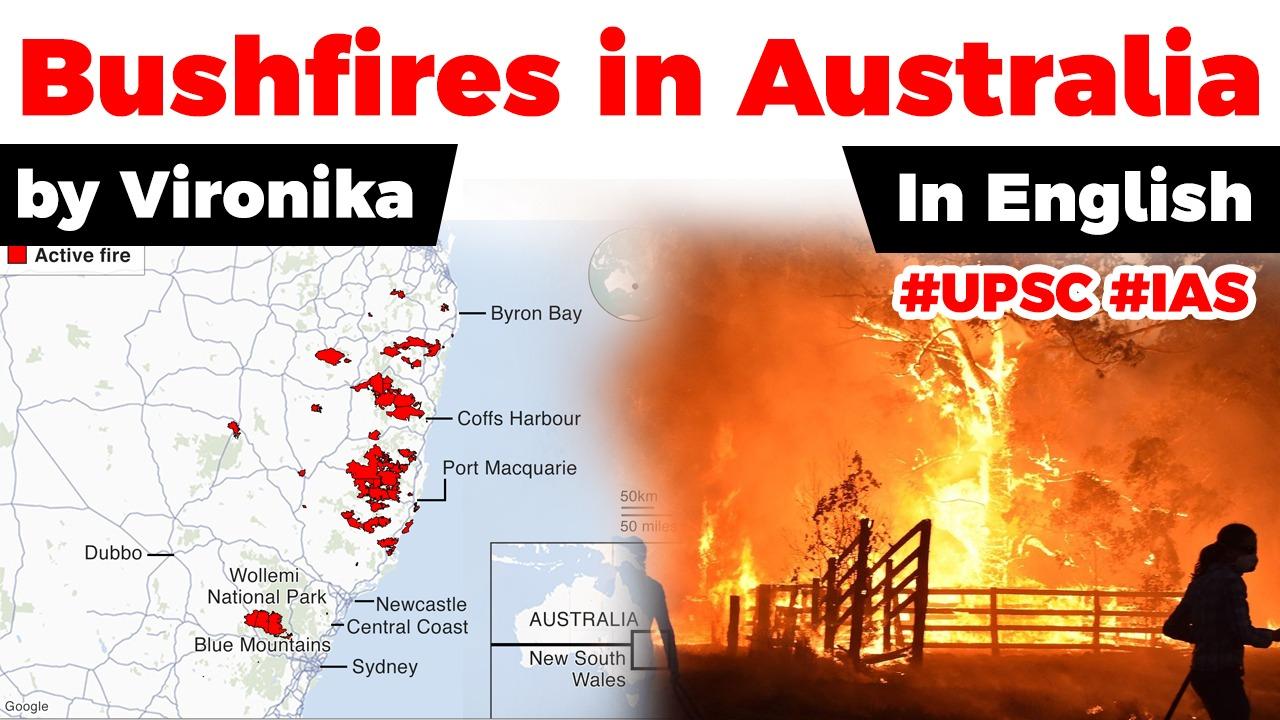Table of Contents
Context
- Australia is witnessing widespread bushfires, and the country has declared a state of emergency for the state of New South Wales (NSW) along with a catastrophic fire warning.

- When catastrophic fire warnings are put in place, residents are supposed to leave bushfire prone areas immediately.
- Bushfires are a routine occurrence in the country.
- The Australian climate is hot, dry and prone to droughts.
- The above pattern now seems to be breaking down, and bushfires are happening outside the regular places and times.
- This bushfire season is believed to be the worst and has started even before the beginning of the Southern Hemisphere summer.
Causes
- These include factors such as fuel load (leaf litter, barks, small branches), fuel moisture, wind speeds, high temperature, oxygen, low humidity and ignition source.
- They can be caused by both human activity and lightning, which is responsible for about half of ignitions in Australia.
Climate change link
- There are speculations about the links between climate change and bushfires.
- While the bushfires are not directly triggered by climate change, climate change is increasing the risk of more frequent and intense bushfires.
Categories
- Hilly/mountainous fires – burn in hilly, mountainous or alpine areas which are usually densely forested.
- Flat/grassland fires – burn along flat plains or areas of small undulation, predominantly covered in grasses or scrubland.
- Plants have evolveda variety of strategies to survive (or even require) bushfires, (possessing epicormic shootsor lignotubers that sprout after a fire, or developing fire-resistant or fire-triggered seeds) or even encourage fire (eucalypts contain flammable oils in the leaves) as a way to eliminate competition from less fire-tolerant species.[4]
- Some native animals are also adept at surviving bushfires
- Bushfires have accounted for over 800 deaths in Australia since 1851 and the total accumulated cost is estimated at $1.6 billion. In terms of monetary cost however, they rate behind the damage caused by drought, severe storms, hail, and cyclones, perhaps because they most commonly occur outside highly populated urban areas.

Latest Burning Issues | Free PDF






















 WhatsApp
WhatsApp